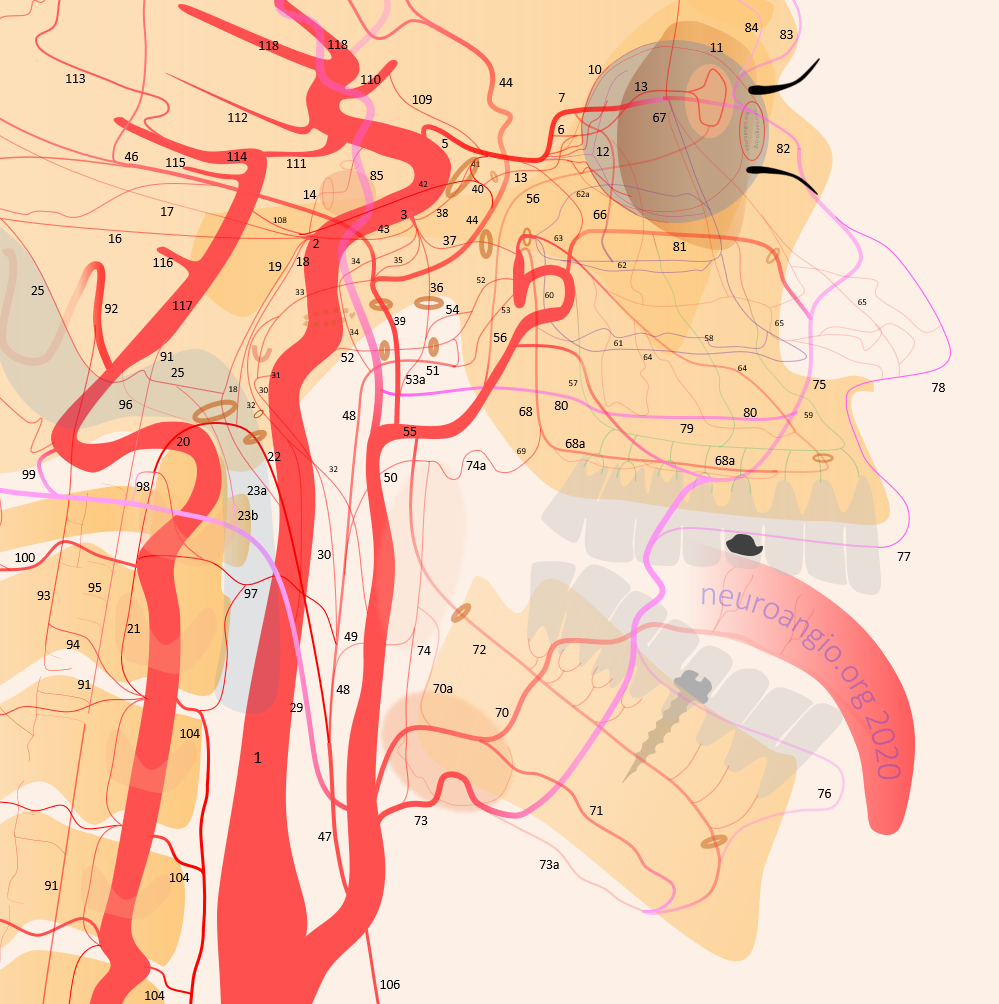
Superficial vessel, usually off proximal ECA separately, sometimes as common faciolingual trunk.
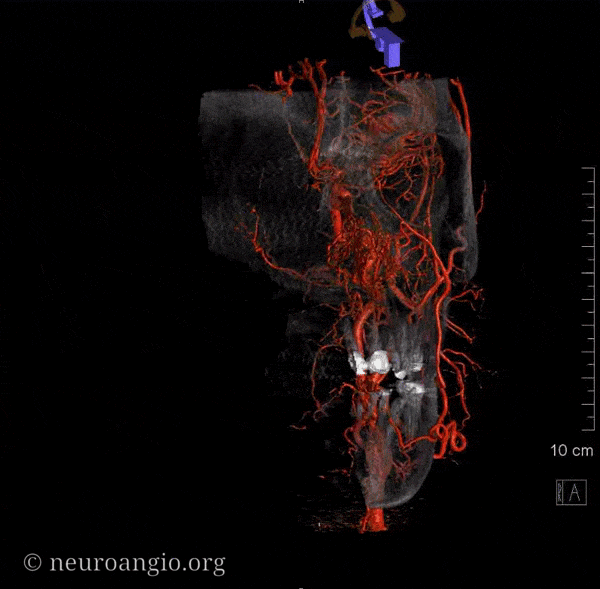
The constant idea of balance and spectrum, which is central to vascular understanding, applies well to facial artery. Its core territory is superficial tissues over mandible. It is in balance with many other arteries. Proximal branch to submandibular gland is usually in balance with branches off the lingual — the larger one contribution the smaller the other. More distally, its submandibular branch (73a) is in balance with the submental branch (71) of the lingual (70) — same idea of balance. More distally still, the angular artery (75) — a kind of termination of the facial, with no distinct transition point — usually supplies the lower (76) and upper (75) labial arteries. Here, it is in balance with the transverse facial artery (80) — again smaller one means bigger other. Most distally, the particularly dominant angular branch can supply the superficial vessels of the nose (78) and the superficial nasal mucosa — where it is in balance with distal sphenopalatine (64) and anterior ethmoid supply (67) to the anterior septal system (65) . Superficially, the distal angular is in balance with the cutaneous branch of the infraorbital (81). Get the idea? Vascular balance and spectrum are always like this — everywhere.
Here is an example to illustrate this — a highly dominant facial dominating pretty much all above territories, with corresponding hypoplasia of contenders — smaller submental, transverse facial, sphenopalatine arteries.
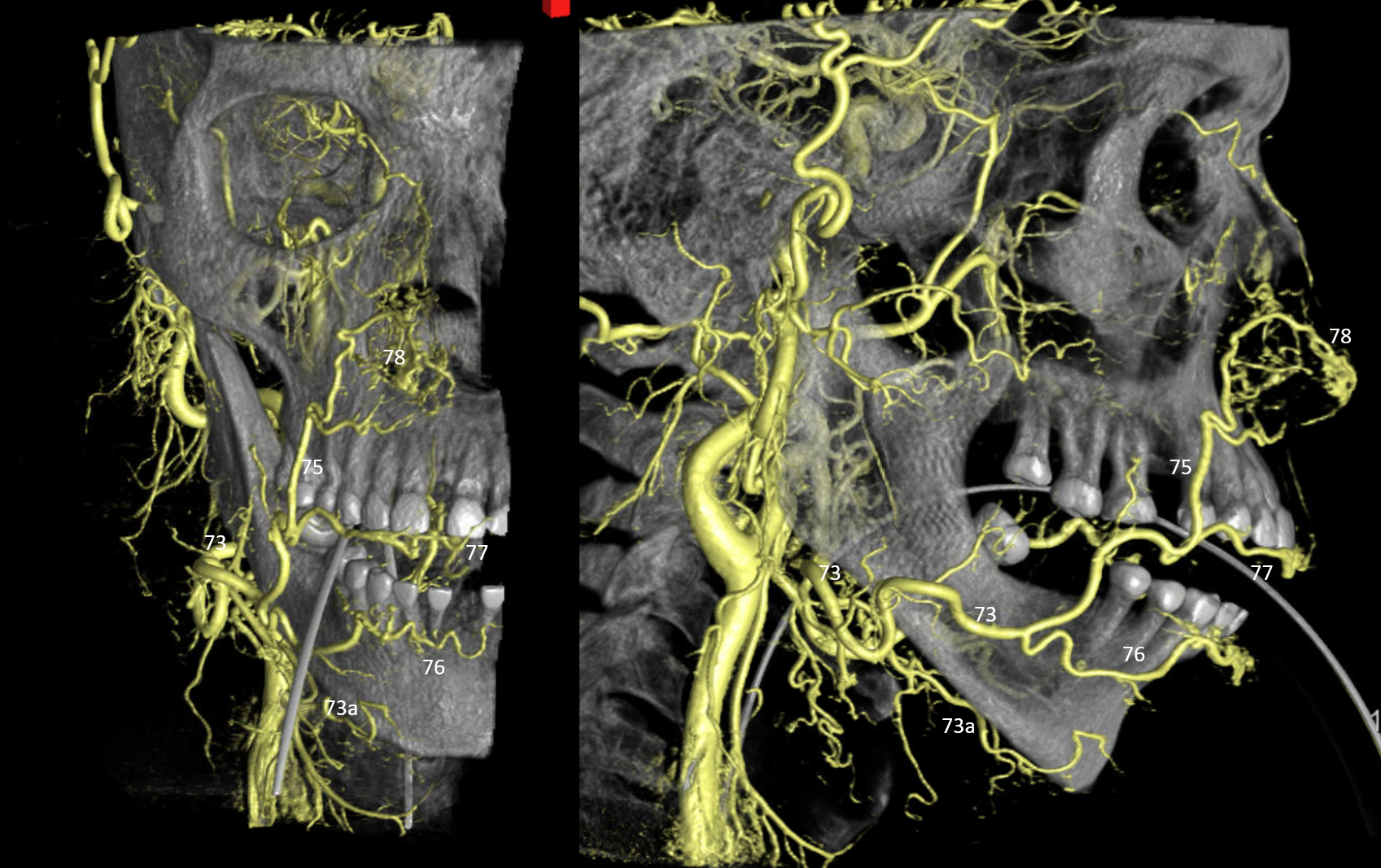
Lateral without bones shows some more nice vessels. Dominant supply to submandibular gland (oval). Big submandibular. Big labial arteries. Notice no transverse facial basically. Big superficial nasal supply.
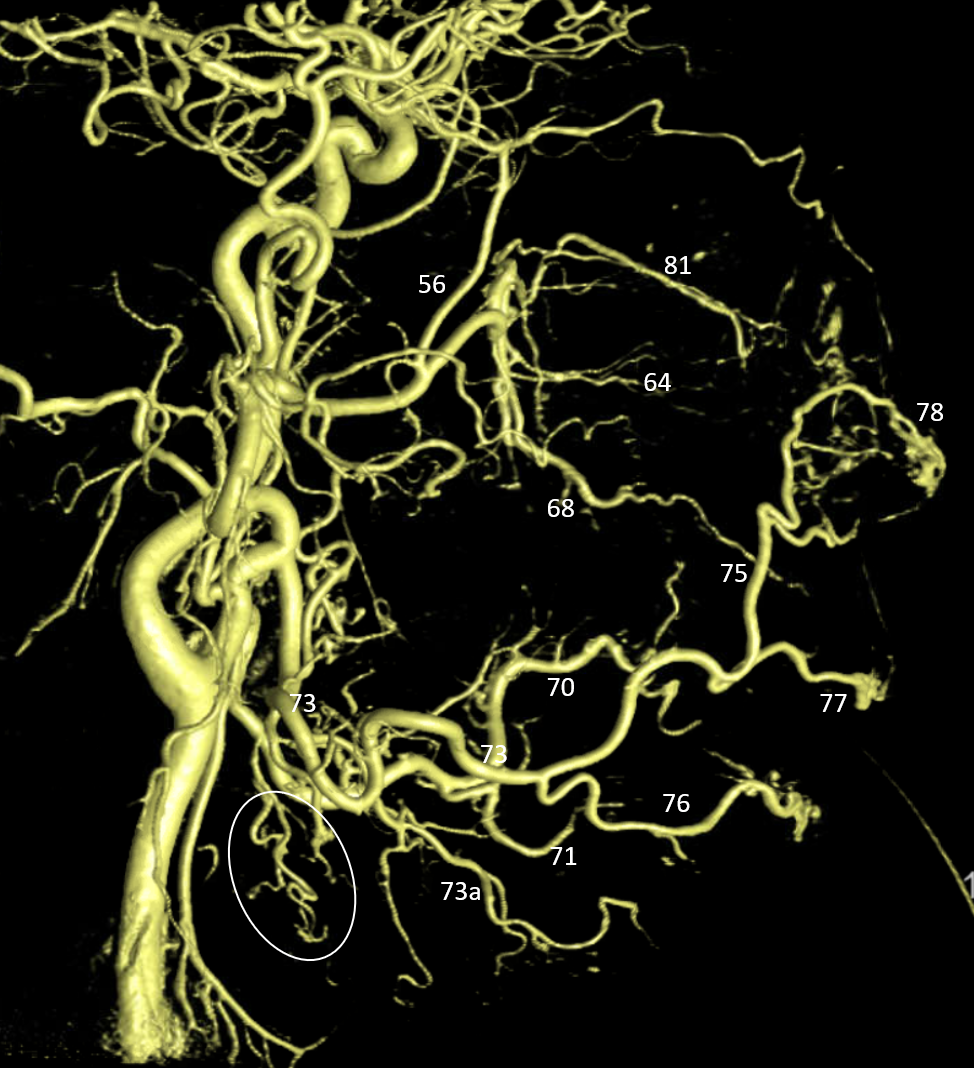
Stereos are very helpful
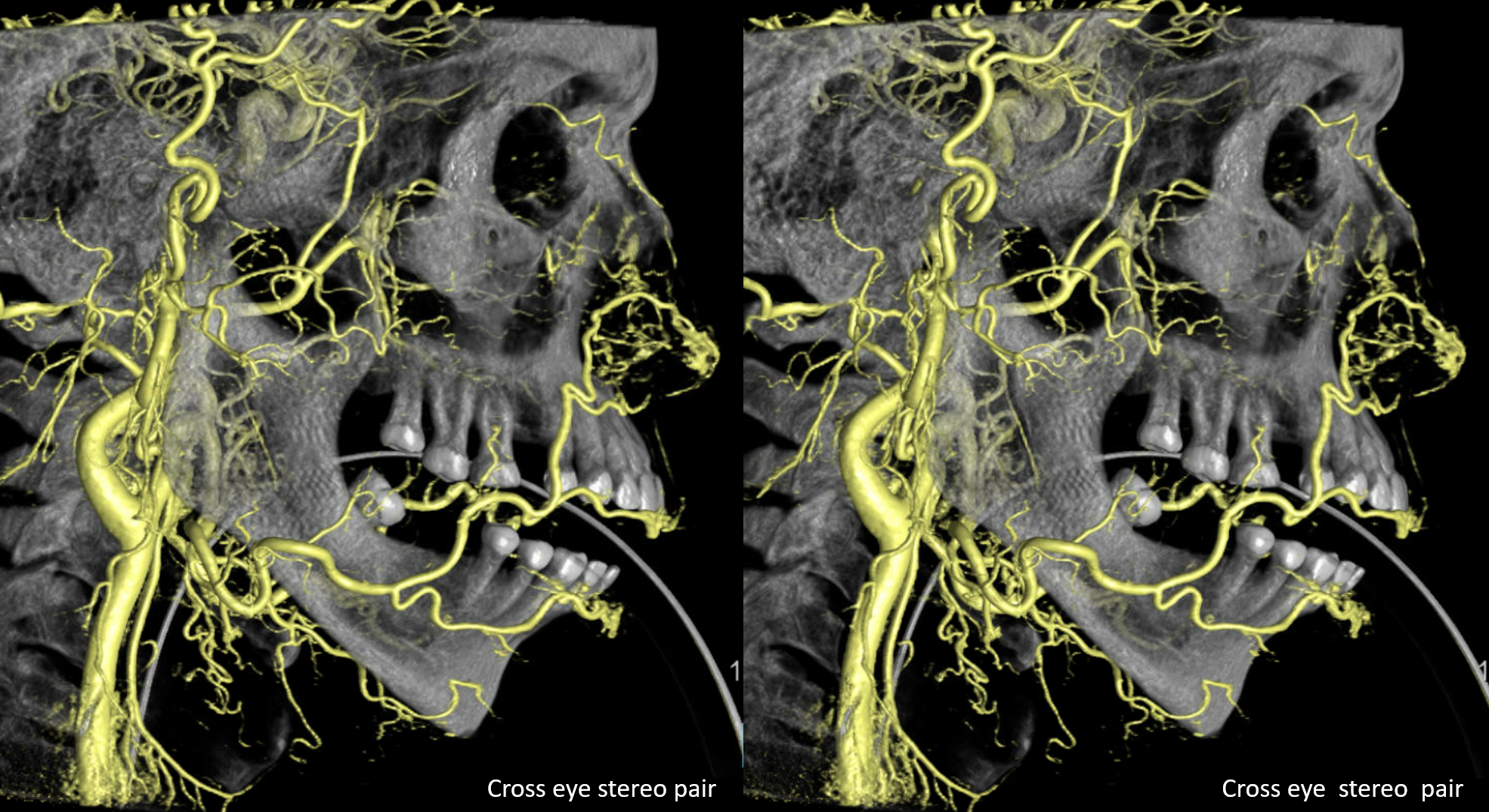
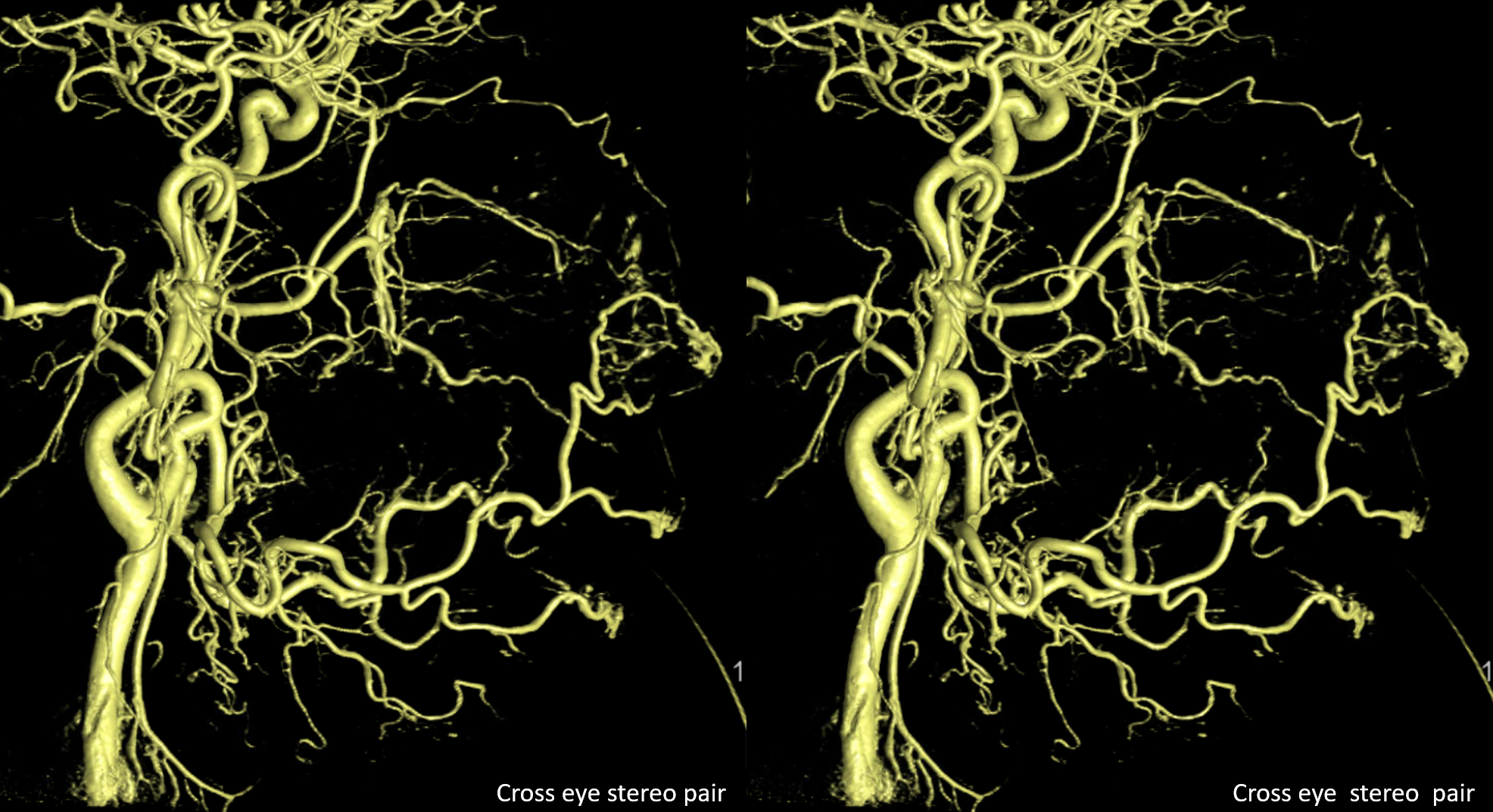
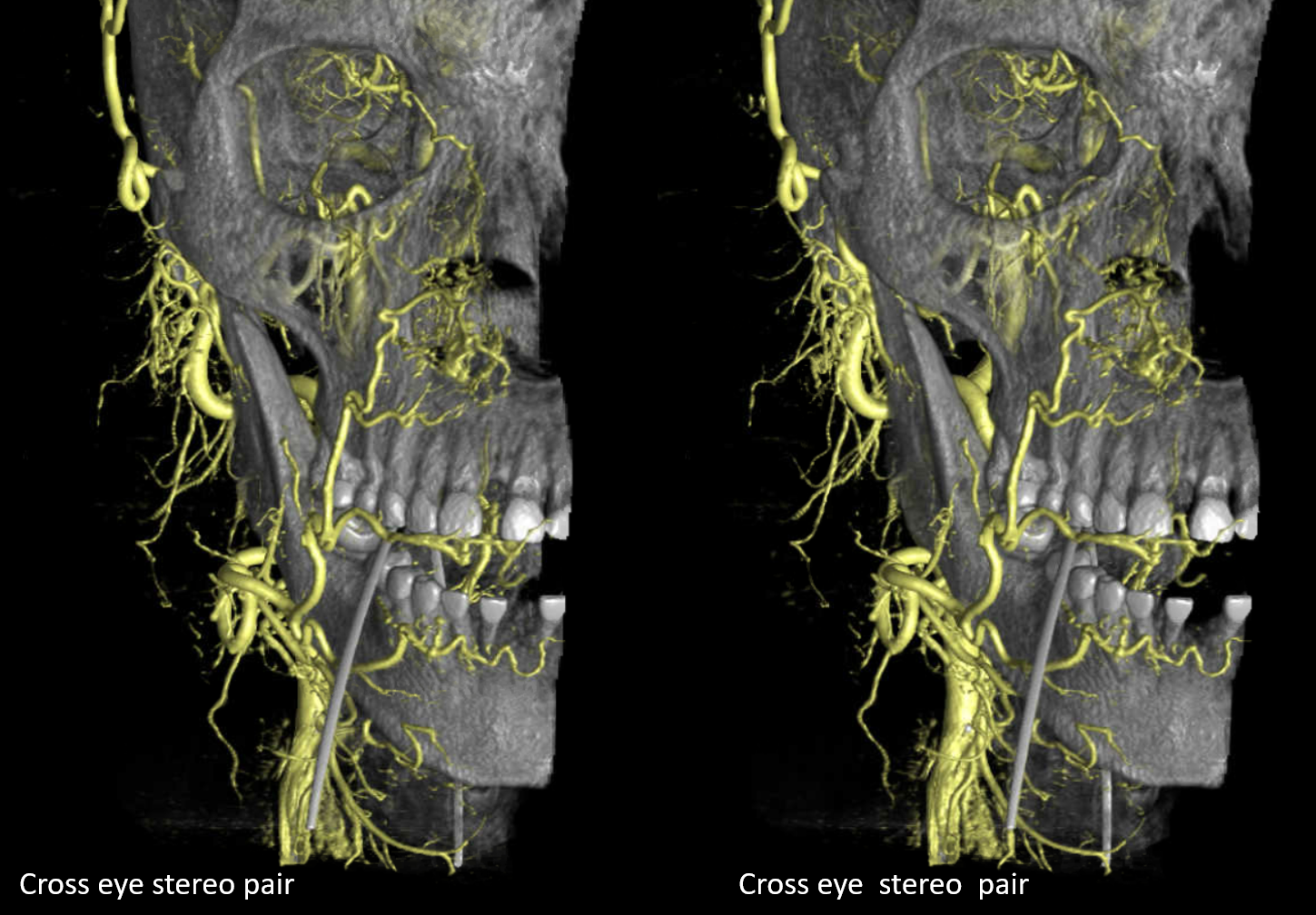
Anaglyph stereos
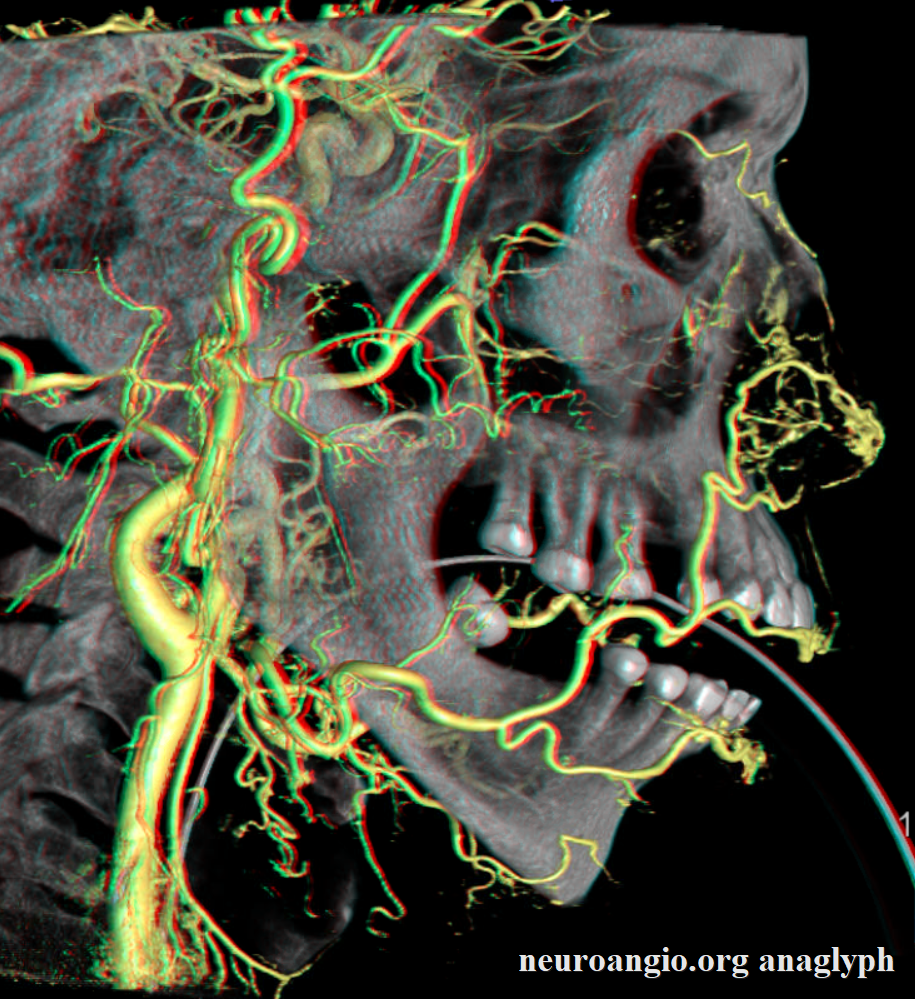
Movie of another dominant facial case. You can stop the movie and scroll through frames. Cant do that with GIFs…
Another arrangement below — duplicated angular arteries in a subject with traumatic STA pseudoaneurysms … indeed, the number of permutations is endless
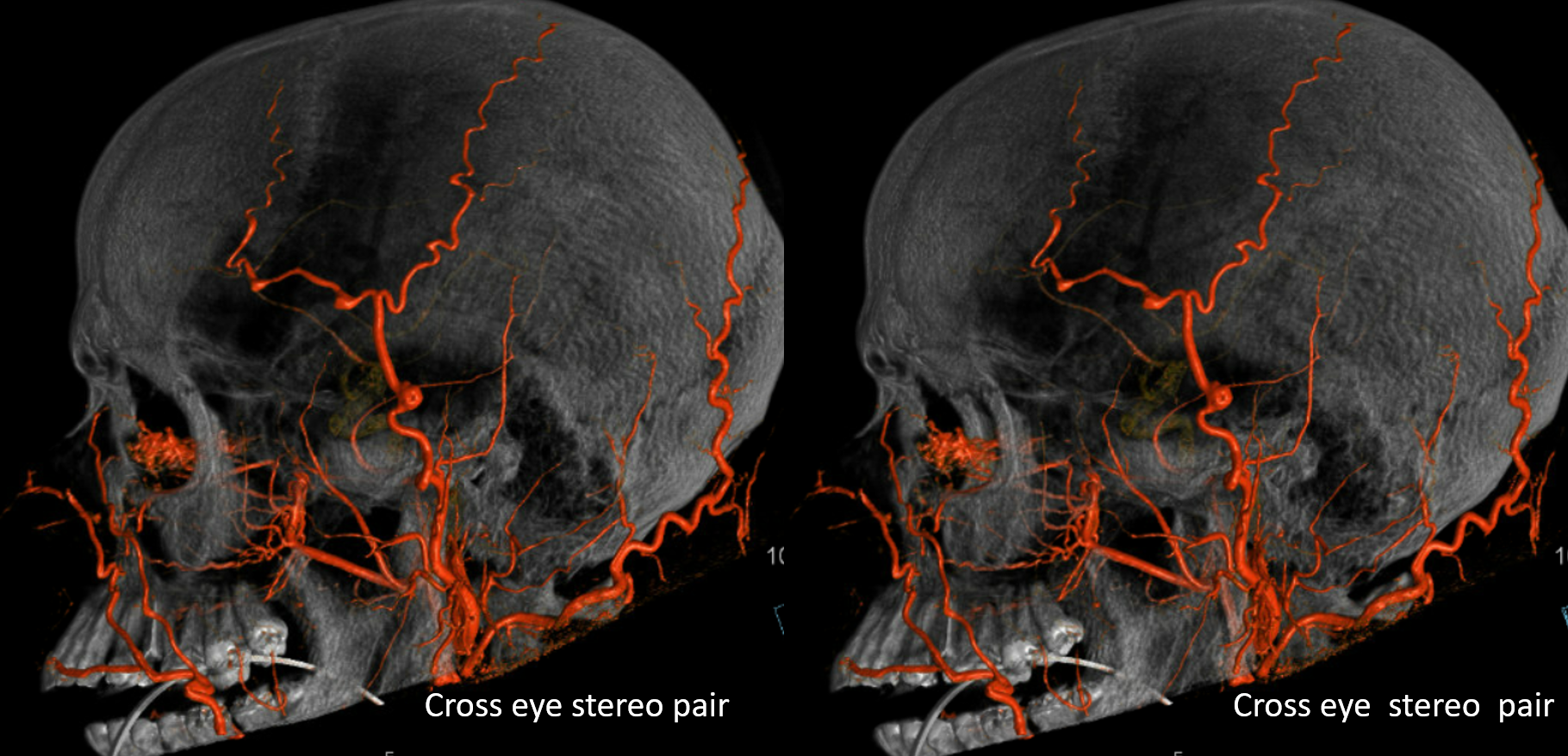
Other end of spectrum — a smaller facial artery — with correspondingly prominent transverse facial (80) participating in superficial nasal supply instead of the angular branch. Balanced submental/submandibular situation and balanced supply to the submandibular gland (oval)
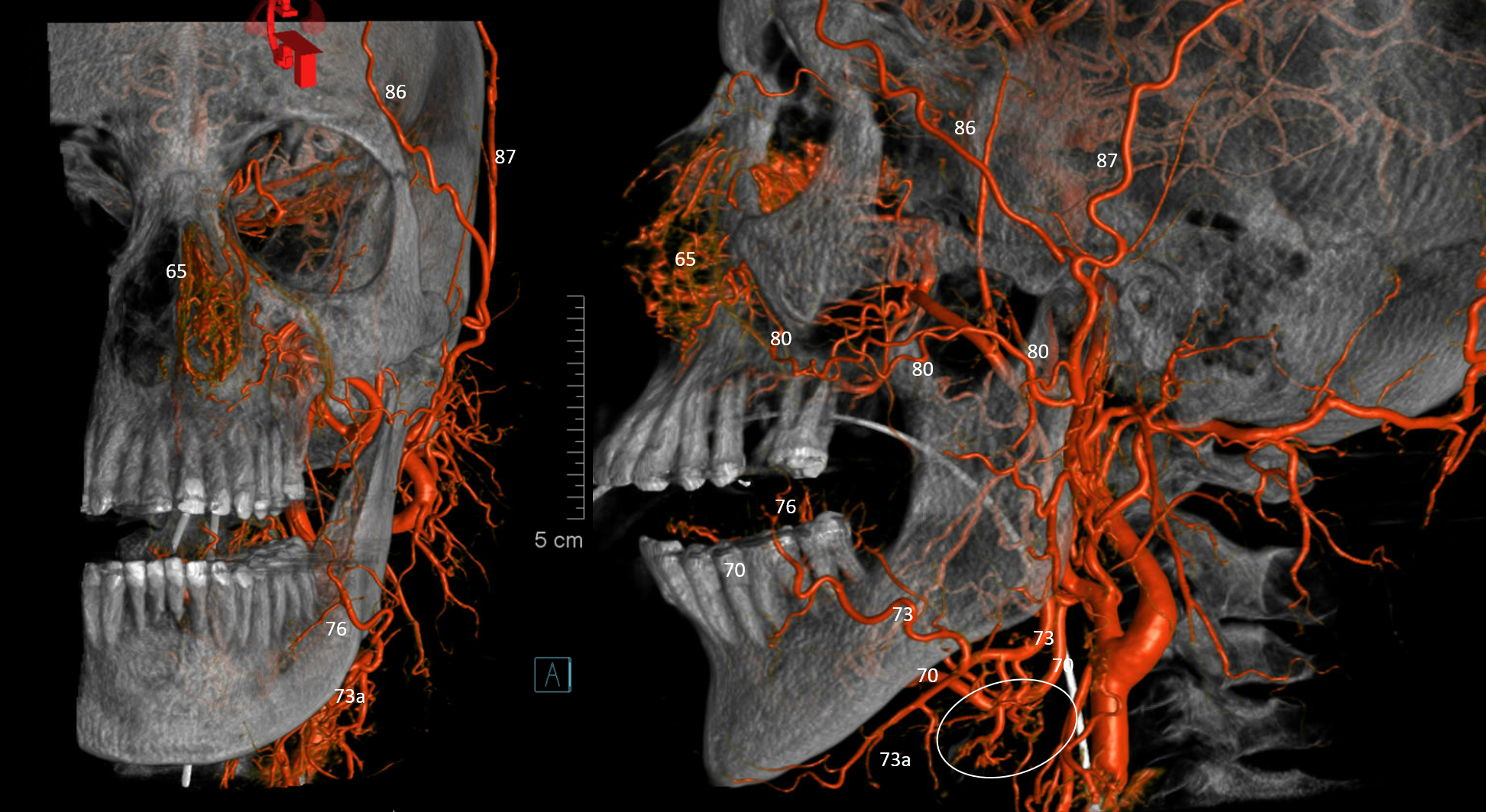
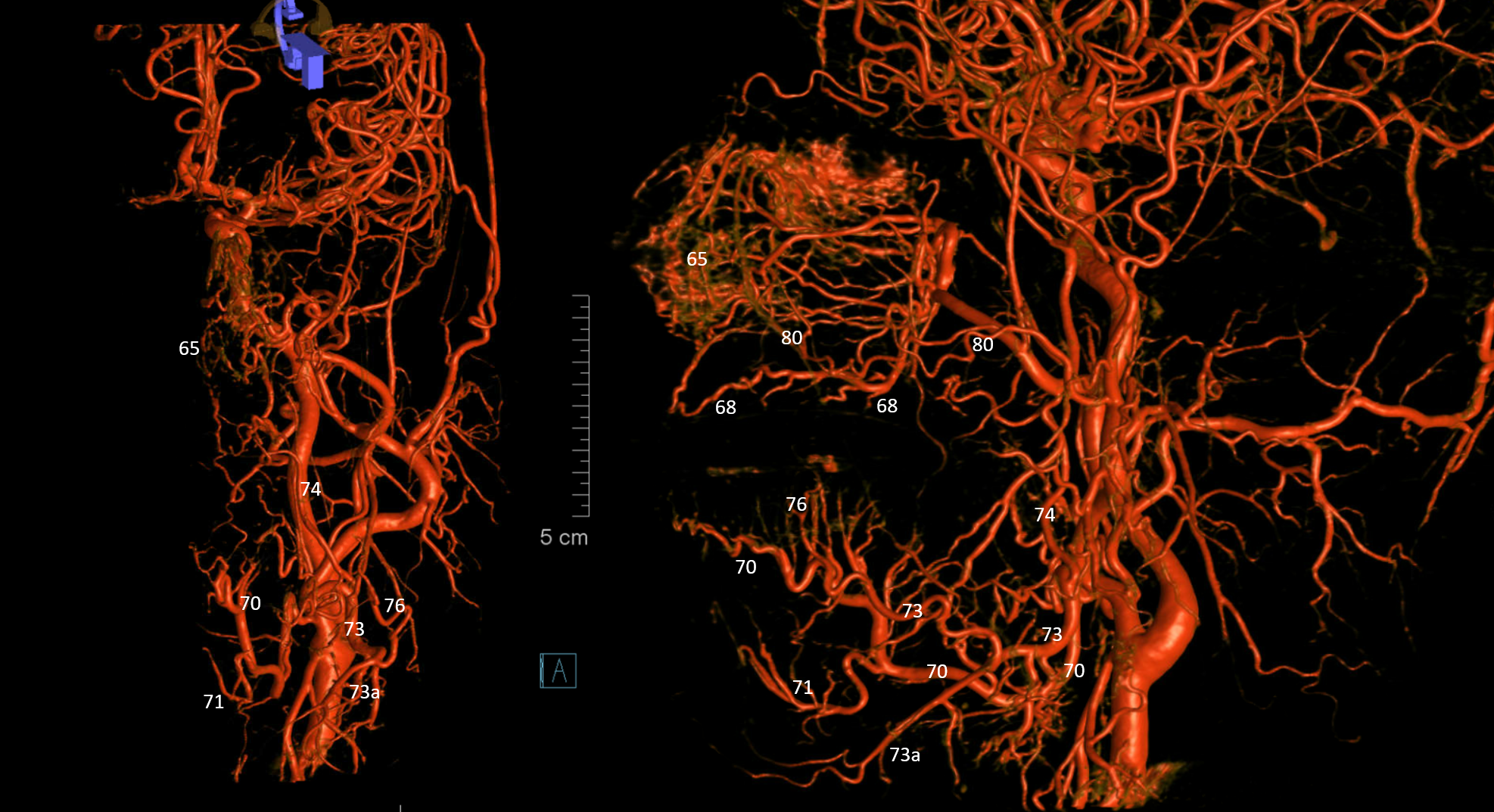
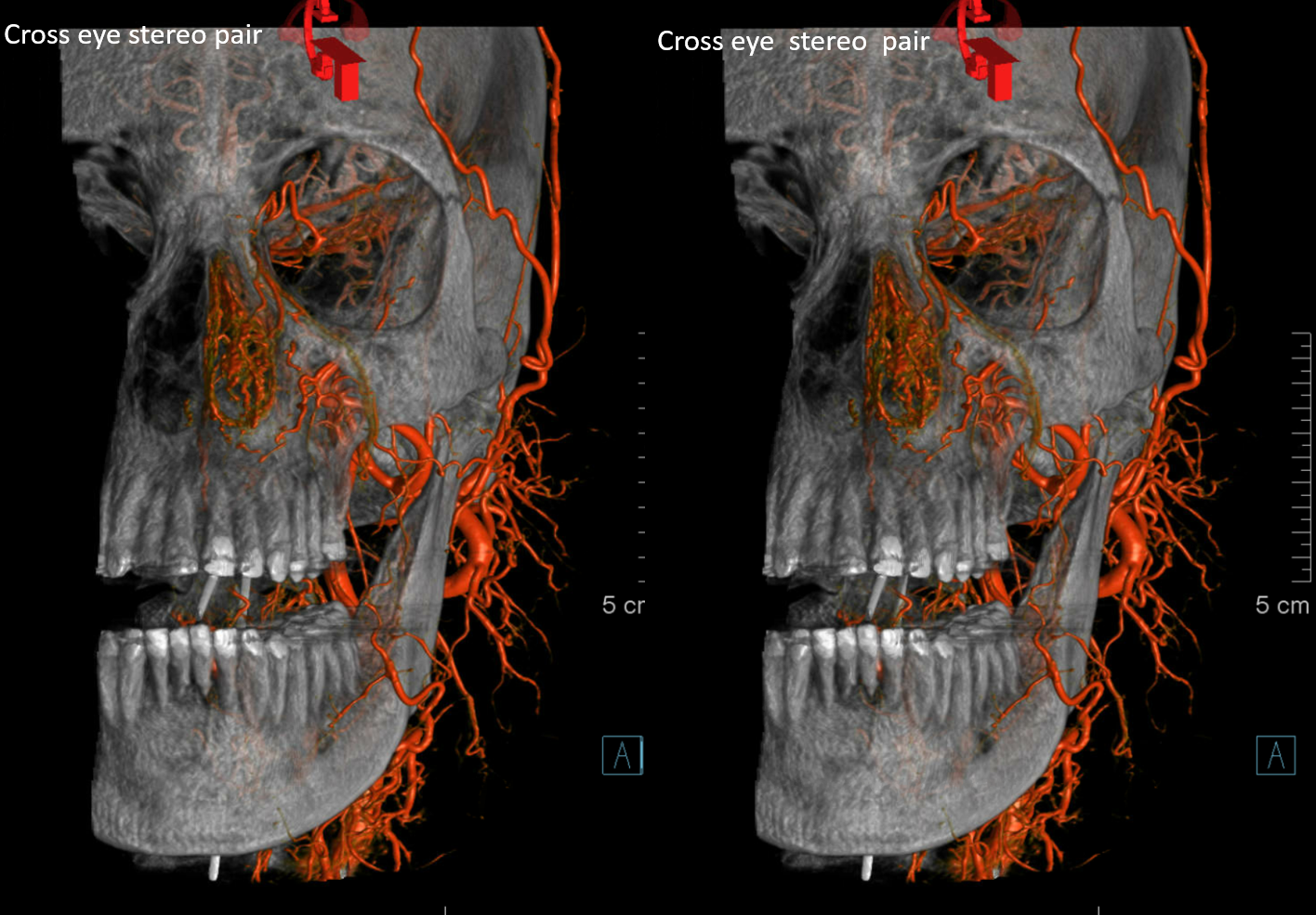
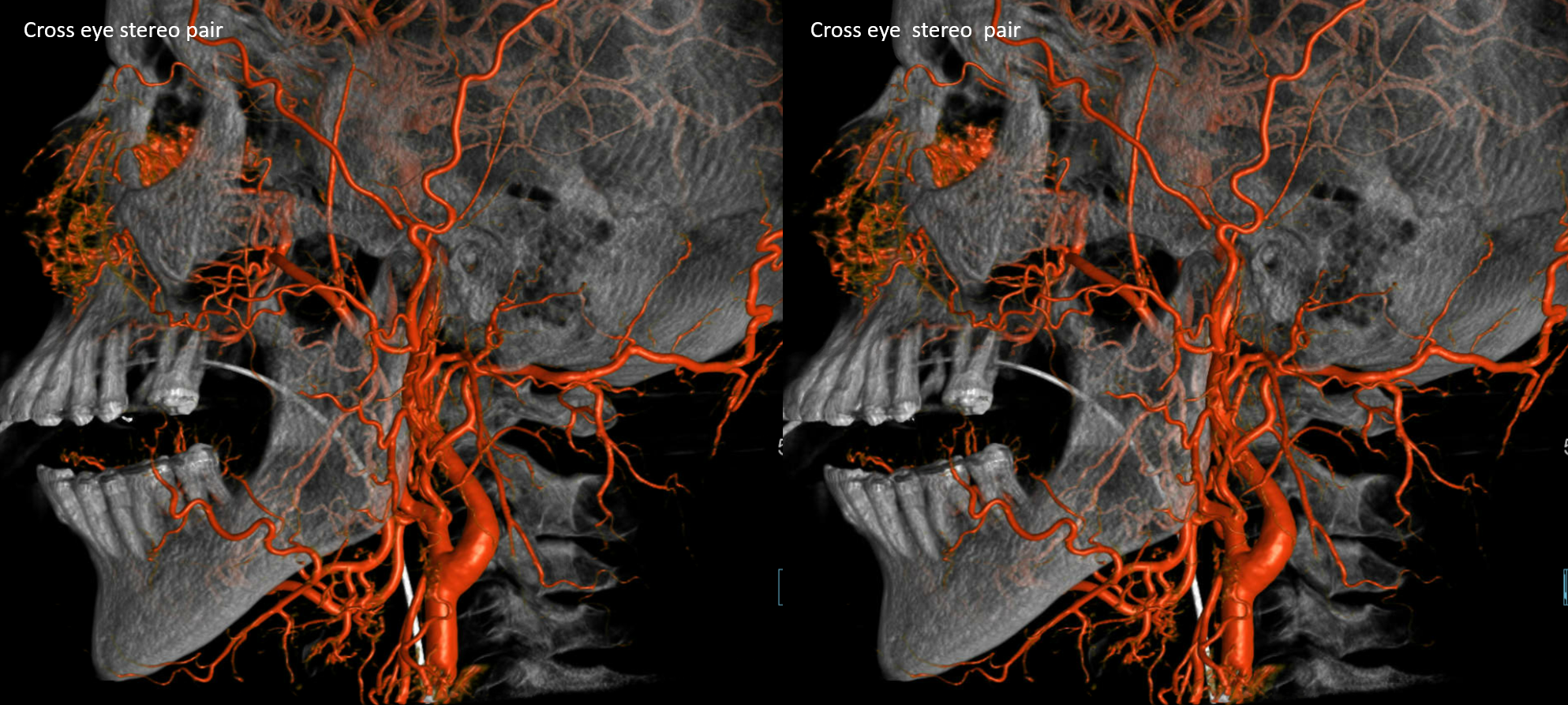
A video example of similar disposition — here the ophthalmic and infraorbital arteries supply much of nasal and angular regions, respectively. Facial artery is small
Very large angular artery supplying much of the nasal tissues. Together with superior labials
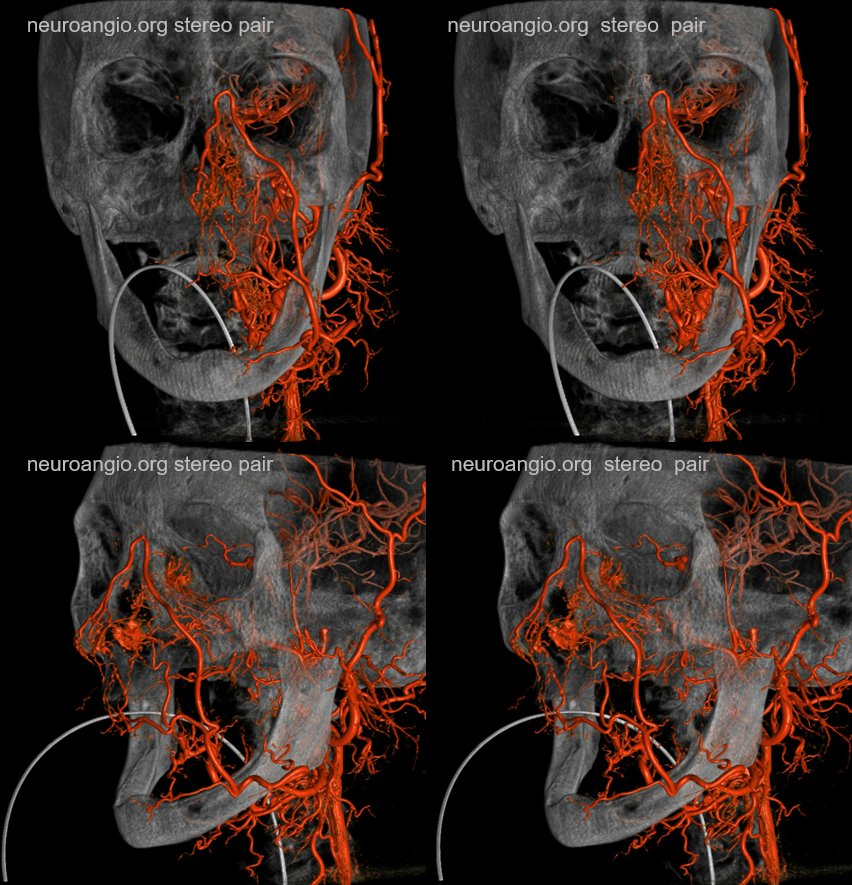
Facial veins!
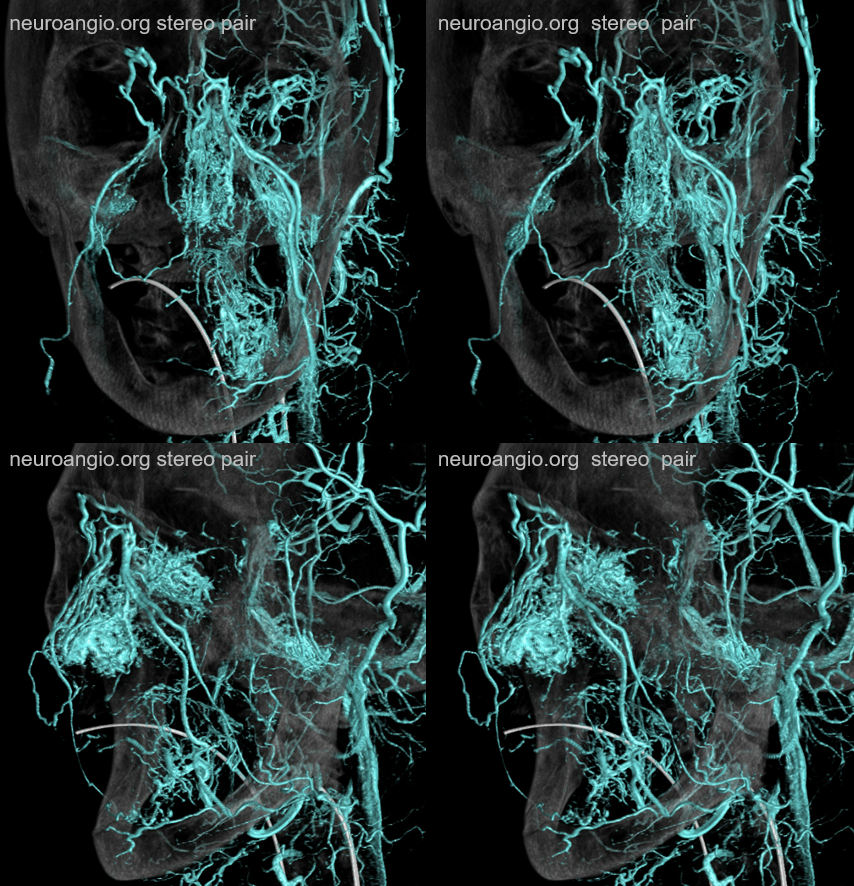
Altogether now
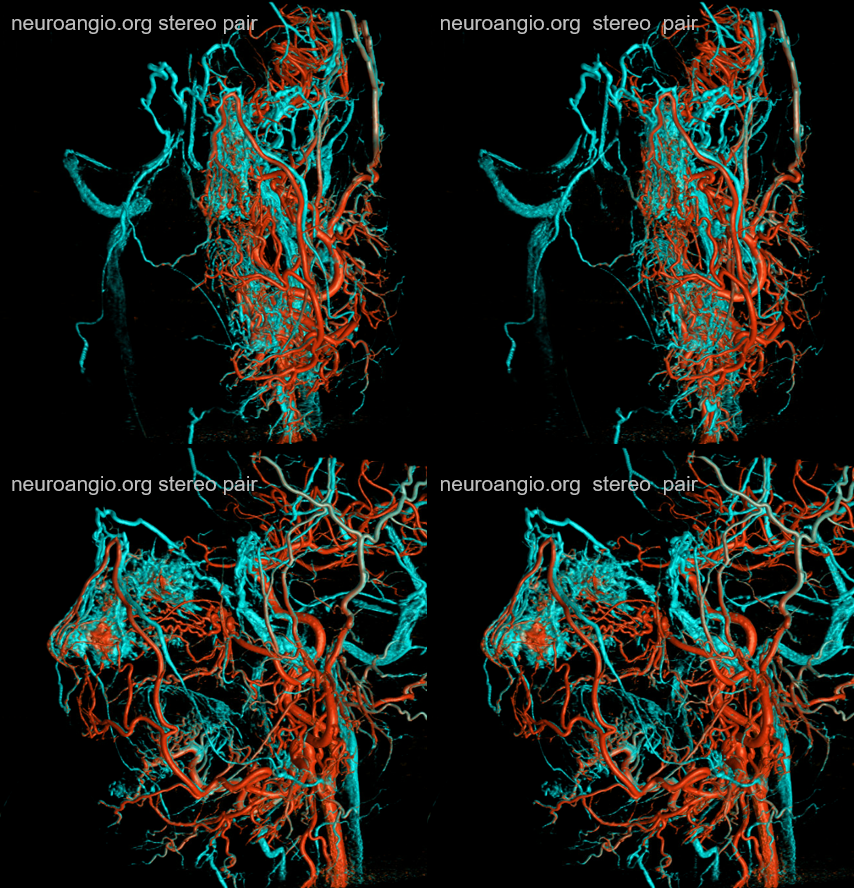
Angio of typical facial artery — notice supply to ascending palatine (74) and artery of soft palate (69) A nice submandibular gland blush is present also (not labeled)
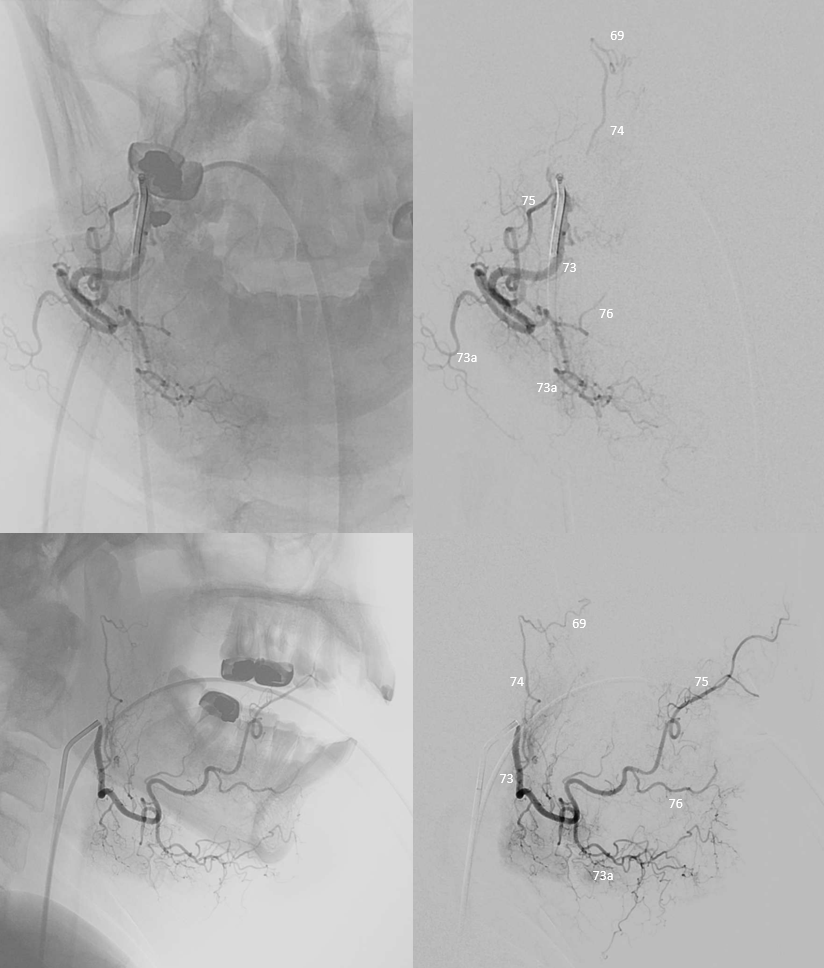
Below is a curious anastomosis between the infraorbital and a facial branch (arrow) — this is not the angular branch, which is more anterior. The facial system is very well developed. Again, its balance.
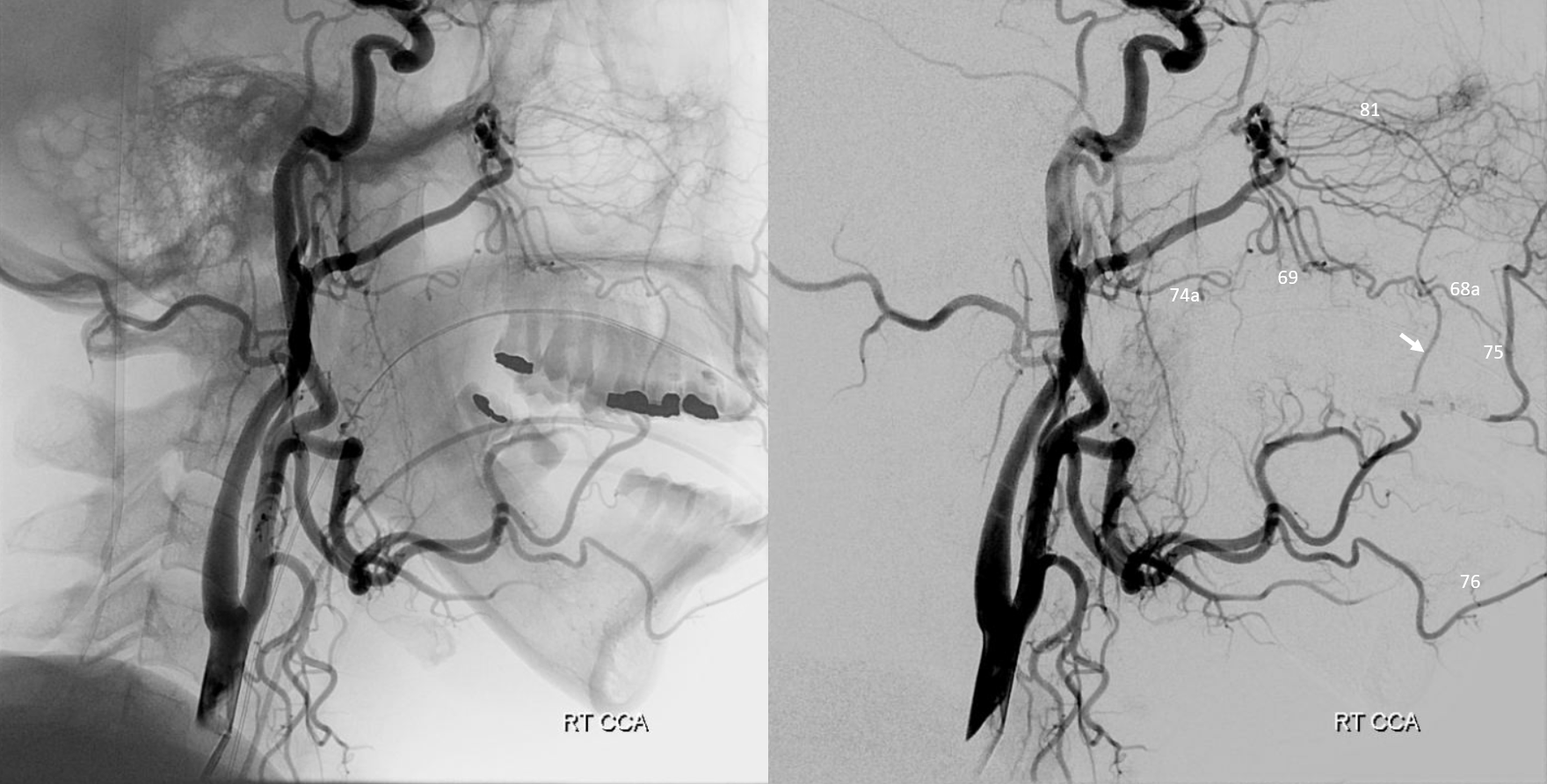
Normal facial artery angio — awake patient. In our experience its better when patients are either completely under GA, or awake and cooperative. Sedation tends to produce the worst images with a moving and sedated patient that cannot follow directions. Here, in a cooperative awake case, venous phase the patient cant help moving because selective facial injections are pretty uncomfortable — lots of burning. Notice nice opacification of submandibular gland and a dominant ascending palatine artery (74)
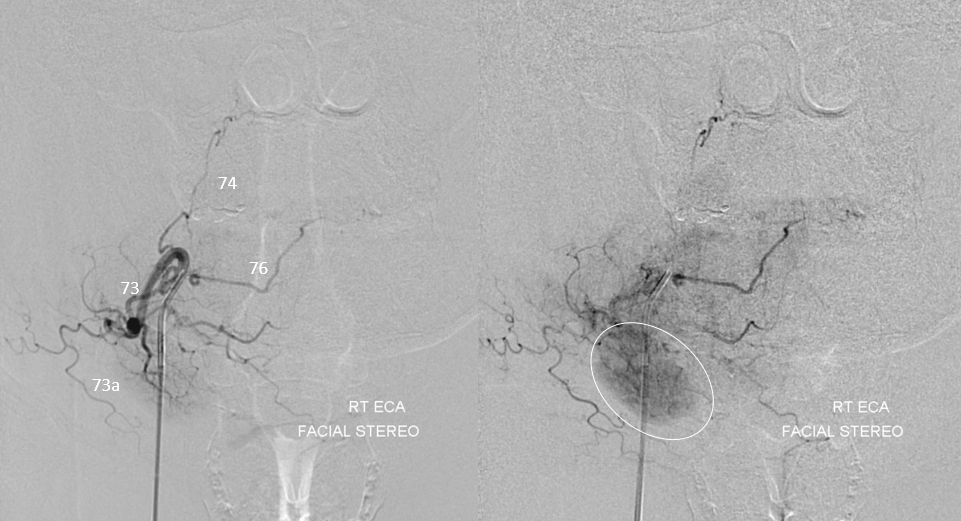
Laterals
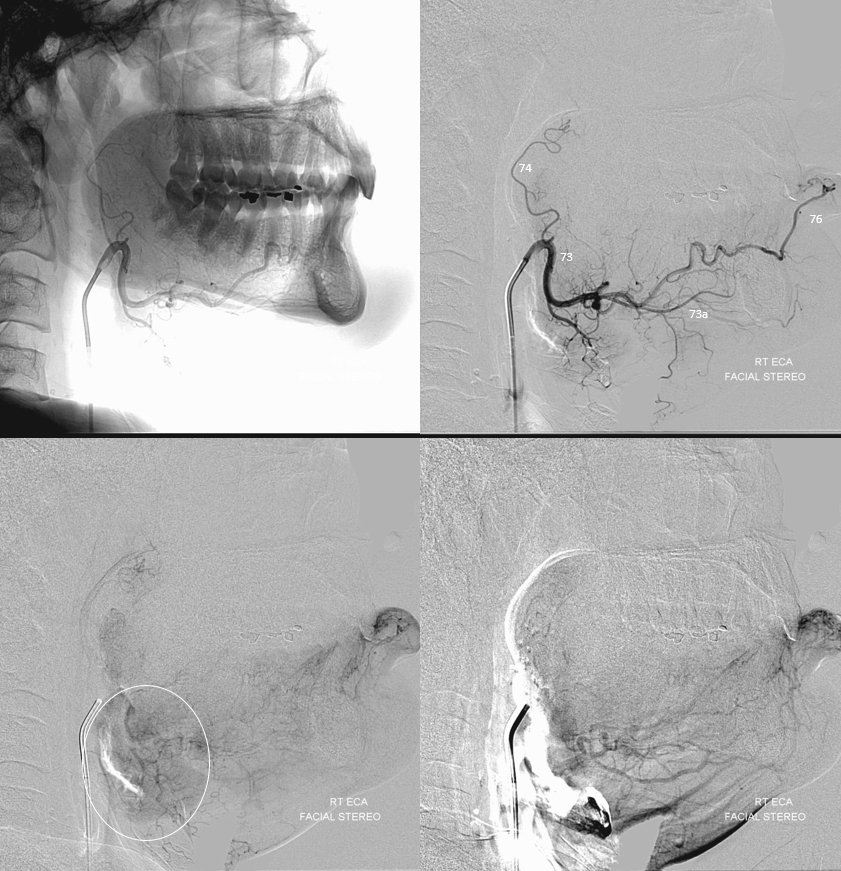
Facial Veins — How about them apples — Stereo arteries
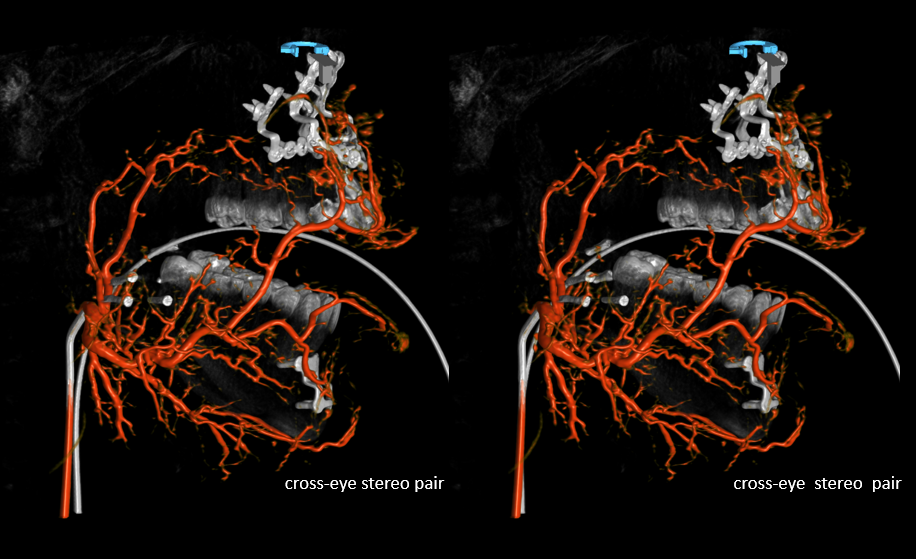
stereo venous phase — pretty cool huh
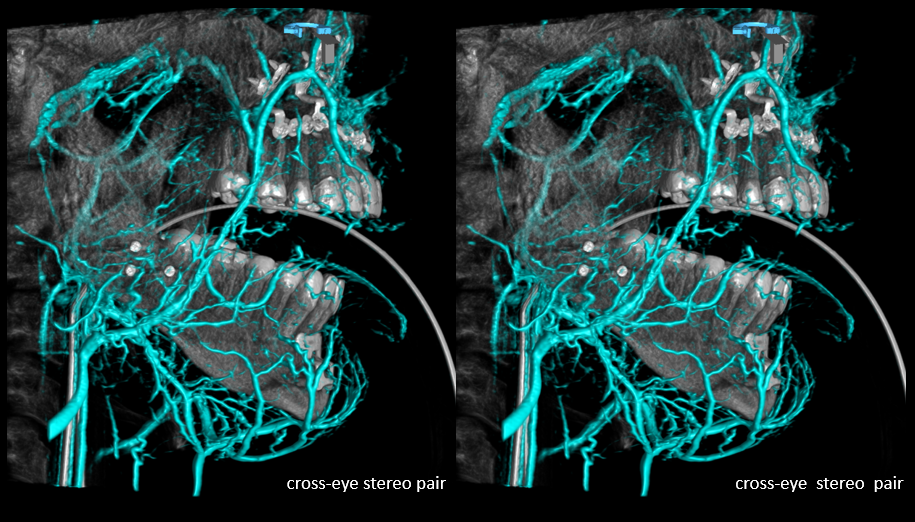
Stereo arteries and veins! very nice
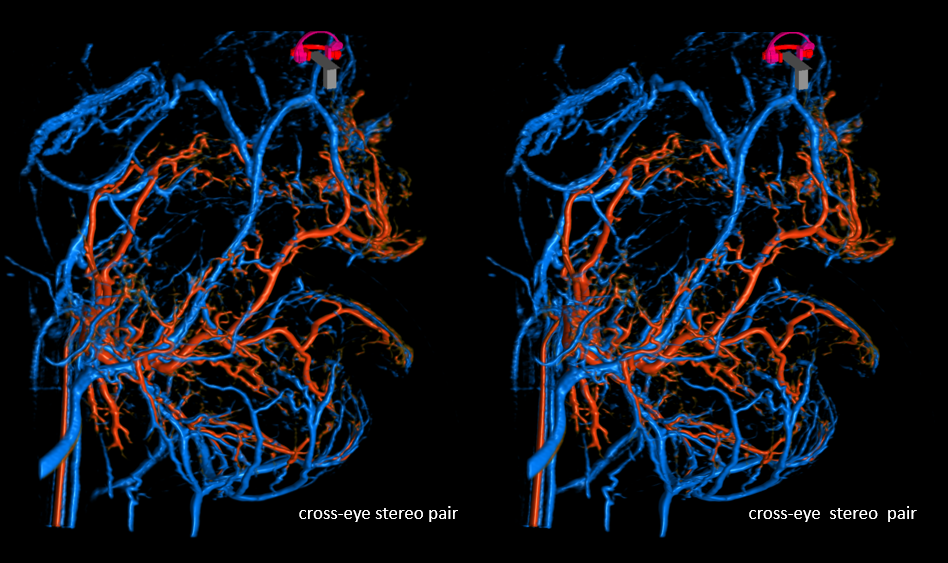
Arteriovenous anaglyph
